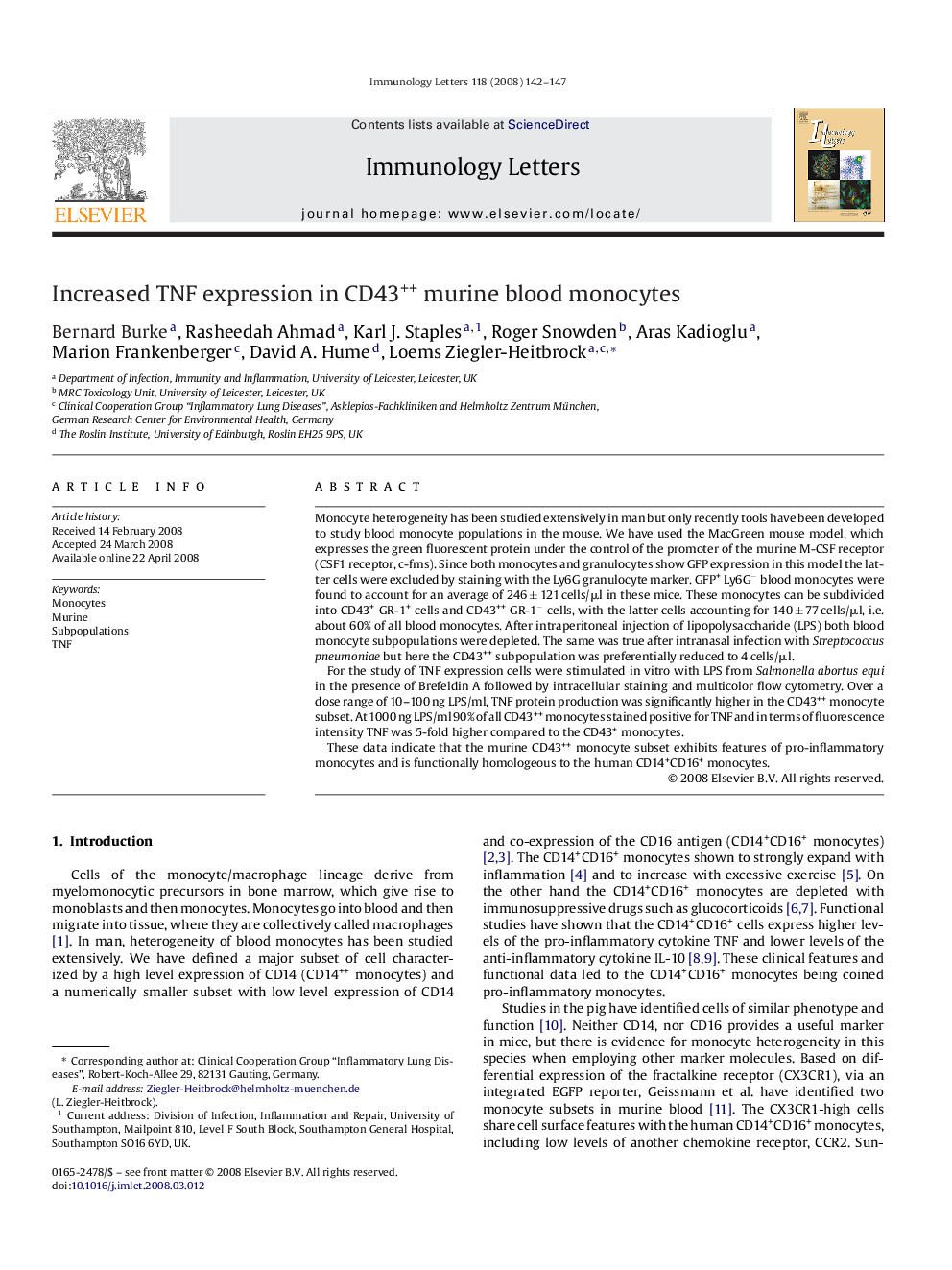| Article ID | Journal | Published Year | Pages | File Type |
|---|---|---|---|---|
| 3356142 | Immunology Letters | 2008 | 6 Pages |
Monocyte heterogeneity has been studied extensively in man but only recently tools have been developed to study blood monocyte populations in the mouse. We have used the MacGreen mouse model, which expresses the green fluorescent protein under the control of the promoter of the murine M-CSF receptor (CSF1 receptor, c-fms). Since both monocytes and granulocytes show GFP expression in this model the latter cells were excluded by staining with the Ly6G granulocyte marker. GFP+ Ly6G− blood monocytes were found to account for an average of 246 ± 121 cells/μl in these mice. These monocytes can be subdivided into CD43+ GR-1+ cells and CD43++ GR-1− cells, with the latter cells accounting for 140 ± 77 cells/μl, i.e. about 60% of all blood monocytes. After intraperitoneal injection of lipopolysaccharide (LPS) both blood monocyte subpopulations were depleted. The same was true after intranasal infection with Streptococcus pneumoniae but here the CD43++ subpopulation was preferentially reduced to 4 cells/μl.For the study of TNF expression cells were stimulated in vitro with LPS from Salmonella abortus equi in the presence of Brefeldin A followed by intracellular staining and multicolor flow cytometry. Over a dose range of 10–100 ng LPS/ml, TNF protein production was significantly higher in the CD43++ monocyte subset. At 1000 ng LPS/ml 90% of all CD43++ monocytes stained positive for TNF and in terms of fluorescence intensity TNF was 5-fold higher compared to the CD43+ monocytes.These data indicate that the murine CD43++ monocyte subset exhibits features of pro-inflammatory monocytes and is functionally homologeous to the human CD14+CD16+ monocytes.
